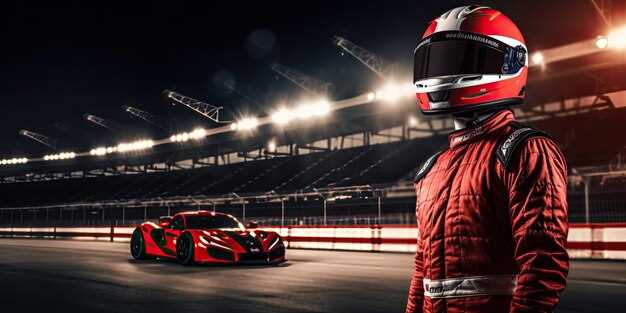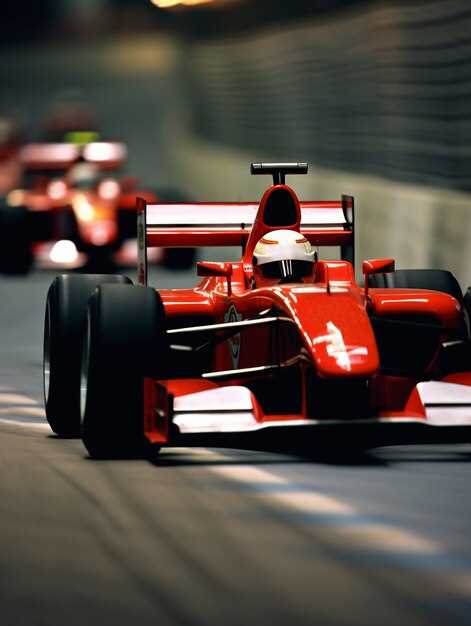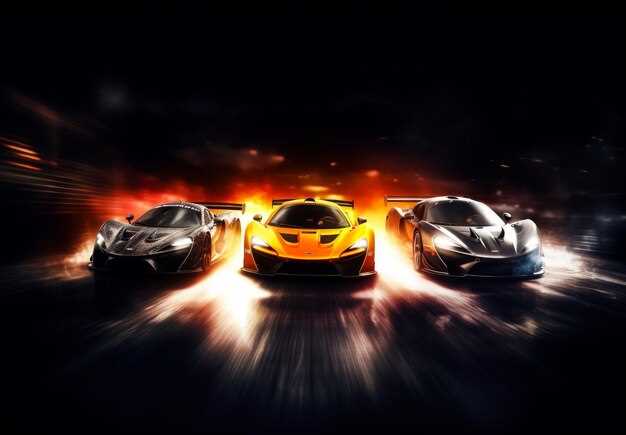
The anticipation builds as the automotive world gears up for the highly awaited McLaren Ferrari GT Racer showdown in 2025. This significant event promises to showcase the pinnacle of racing engineering and design, bringing to life the fierce competition between two of the most iconic brands in motorsport. Both McLaren and Ferrari have established their legacies on the racetrack, and as we look towards the future, fans and experts alike are eager to dissect the potential outcomes of this thrilling confrontation.
McLaren’s commitment to innovation and performance has led to the development of its latest GT racing vehicles, which are designed to push the boundaries of speed and agility. With a blend of cutting-edge technology and a rich racing heritage, McLaren aims to dominate the GT racing circuit. On the other hand, Ferrari’s storied tradition and competitive spirit bring an unparalleled level of experience to the table, making them formidable opponents in any racing event.
As the countdown to the showdown begins, analysts and enthusiasts alike are making their predictions based on current performance metrics, driver capabilities, and technological advancements. Who will emerge victorious in this exciting clash of titans? In the following sections, we will delve deeper into the strengths and weaknesses of each contender, offering insights and expert opinions that will set the stage for this epic rivalry.
Comparative Analysis of McLaren and Ferrari Performance Metrics
In the realm of GT racing, McLaren and Ferrari stand as titans, each bringing their unique engineering philosophies and racing heritage to the track. Analyzing their performance metrics provides insights into which brand may have the edge in the 2025 GT Racer Showdown.
Both manufacturers excel in various areas, including speed, handling, and technological innovation. Below are key performance metrics to consider:
- Speed:
- McLaren models have been known for their lightweight construction, enabling faster lap times on most tracks.
- Ferrari, however, often develops engines with higher power outputs, leading to remarkable straight-line speeds.
- Acceleration:
- McLaren frequently utilizes advanced aerodynamics and hybrid technology to achieve superior acceleration, especially from a standing start.
- Ferrari focuses on delivering smooth power delivery that allows for gradual acceleration without loss of traction, benefiting in corner exit speeds.
- Handling:
- McLaren vehicles are typically praised for their precise steering and cornering capabilities, resulting from meticulous weight distribution.
- Ferrari emphasizes dynamic balance, providing drivers with the confidence to push limits while maneuvering through tight turns.
- Technology Integration:
- McLaren incorporates cutting-edge technology, including telemetry systems that allow real-time data analytics during races.
- Ferrari invests in advanced simulation tools to enhance driver training and vehicle setup before race day.
In summary, while both McLaren and Ferrari possess distinct competitive advantages, the choice between them will often come down to individual driver preferences and track conditions. As the 2025 GT Racer Showdown approaches, understanding these performance metrics will be crucial for fans and analysts alike as they forecast the likely victor.
Driver Strategies: Key Factors for Success in 2025

In the high-stakes world of GT racing, the performance of drivers is essential for the success of teams like McLaren and Ferrari. As we look ahead to 2025, several key strategies will define how drivers maximize their chances of victory. Understanding track conditions, vehicle dynamics, and tire management will be paramount.
Firstly, adaptability to changing track conditions is crucial. Races can shift dramatically with weather changes or differing asphalt grip levels. Drivers must quickly adjust their racing lines and braking points to maintain optimal speed. This requires keen observation skills and rapid decision-making abilities.
Another vital factor is communication with the team. Effective collaboration with engineers and strategists during the race can lead to better tactical adjustments. Drivers must articulate their vehicle’s performance characteristics accurately to allow for real-time adjustments to setup and strategy.
Moreover, tire management plays a critical role in endurance races. Drivers must balance speed with sustainability, ensuring that tires last throughout stints while delivering competitive lap times. Knowing when to push the limits and when to conserve can be the difference between victory and defeat.
Lastly, maintaining a mental edge is essential for drivers in 2025. The psychological aspect of racing cannot be underestimated. Drivers must stay focused and composed under pressure, especially when competing against renowned teams like Ferrari. Developing resilience and maintaining a positive mindset will be key to navigating the challenges of the race.
In conclusion, success for McLaren drivers in the GT Racer Showdown will hinge on their ability to adapt, communicate effectively, manage tires wisely, and maintain psychological strength throughout the competition.
Technological Innovations That Could Influence the Outcome

In the highly competitive arena of GT racing, technological innovations play a pivotal role in determining the victor. For the McLaren and Ferrari showdown in 2025, several advancements could significantly impact performance and strategies.
One of the most crucial areas of innovation is in aerodynamics. McLaren has been investing heavily in computational fluid dynamics (CFD) and wind tunnel testing to refine their vehicle designs. By optimizing airflow over the car, they can achieve better downforce without increasing drag, enhancing speed and stability on the track.
Another significant area is powertrain technology. McLaren’s focus on hybrid power systems could provide a competitive edge. The integration of sophisticated energy recovery systems allows for improved acceleration and efficiency, enabling the car to harness energy that would otherwise be lost. This could be particularly beneficial in endurance racing formats, where every ounce of performance matters.
Additionally, advancements in lightweight materials are set to transform vehicle dynamics. Using carbon fiber composites and other advanced materials, McLaren can reduce weight while maintaining structural integrity. A lighter car not only accelerates faster but also offers better handling, which is crucial for navigating tight corners and maintaining speed through complex turns.
Data analytics and real-time telemetry are also expected to play a crucial role. McLaren’s use of sophisticated algorithms to analyze performance data allows for immediate adjustments during races. This can lead to strategic decisions that may greatly influence race outcomes, such as optimizing tire strategies and adjusting engine settings on the fly.
Lastly, advancements in driver assistance technologies, such as enhanced telemetry feedback and AI-driven coaching, can equip McLaren drivers with insights that improve their performance. This technological edge can be a secret weapon, especially in a showdown characterized by razor-thin margins.










